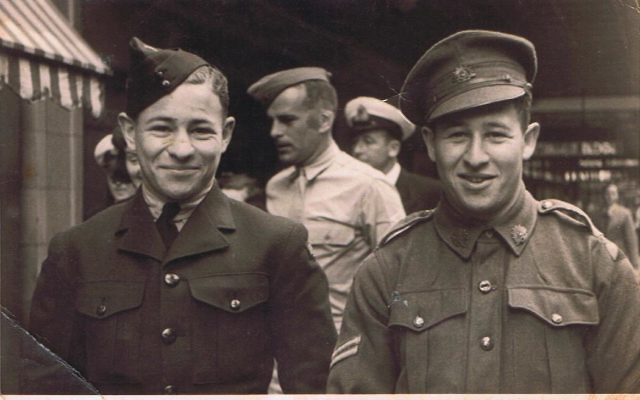When the world stood up to Hitler
AS the world marked the 75th anniversary of the outbreak of World War II this week, Jewish ex-servicemen recalled where they were when war broke out and what role they later played in history’s greatest ever conflagration, in which more than 60 million people died, including six million Jews in the Holocaust.
AS the world marked the 75th anniversary of the outbreak of World War II this week, Jewish ex-servicemen recalled where they were when war broke out and what role they later played in history’s greatest ever conflagration, in which more than 60 million people died, including six million Jews in the Holocaust.
Sydneysider Wesley Browne was 16 when World War II was declared on September 3, 1939, and remembers his father sleeping with a revolver under his pillow in the family’s Rose Bay house, afraid that Australia would be invaded.
“We were all worried, whether Sydney would be bombed, and we had to be careful what we said.”
Browne, a past-president of the Federation of Australian Jewish Ex-Service Associations (FAJEX), as well as the NSW Association of Jewish Ex-Servicemen & Women, and Legacy Sydney, enlisted on his 18th birthday in the Joint Air Training Corps, and trained to become a leading aircraftsman.
He studied wireless telegraphy at Point Cook, Victoria, in 1942. Shipping out to New Guinea in 1944, his unit moved from island to island, frequently coming under Japanese aerial bombardment.
He recalled attending a Shabbat service at a US military base in New Guinea, in the company of two childhood friends from the 2nd Bondi Scouts.
Joe Salfas of Melbourne, a past president of the Victorian Association of Jewish Ex & Servicemen and Women, remembered war breaking out in his bar mitzvah year. He joined up on his 18th birthday, on Anzac Day 1944, as a photographer.
“I was posted to the Allied Geographical Section in Brisbane, “ said Salfas, “where I saw the preparation of maps to help with the Allied invasion of Japanese-held Pacific islands.”
Jewish Holocaust Centre community relations director Michael Cohen described September 1939 as “not only a seminal moment in world history; it was also a watershed in the annals of the Jewish people – the death knell for millions of Jews in the Holocaust – a genocide unprecedented in duration, scope, intensity, methodology and brutality.
“Despite the passage of time – and 75 years represents several generations – the outbreak of war and the Nazi invasion of Poland, home to the world’s largest Jewish population, is a date seared in Jewish memory,” he said.
“Yet a date less than a decade later, May 14, 1948, is also of timeless significance: it marks the beginnings of renewal for the Jewish people with the establishment of an independent Jewish state.”
FAJEX president Brian Nebenzahl recalled that Jewish servicemen and women were represented in the Australian navy, army and air force, as well as the nursing and women’s services. “Many served with great distinction and survived to tell their story.”
“New arrivals, refugees from Europe with limited English, were enlisted into numerous labour battalions, while others, with recognised qualifications, were army doctors, dentists,” he said.
“FAJEX honours and remembers the service of many Jewish personnel at this time,” he said. “Those who made the supreme sacrifice will never be forgotten.”
Nebenzahl was four years old when he arrived in Sydney with his parents from London in May 1939. They were Polish refugees and had sailed from Gdansk to London, before their passage to Australia. As an older boy, he remembered following the Battle of Britain on radio and in newspapers.
PETER KOHN
Wesley Browne (left) served in the AAF and his late brother Adrien was in the army.


comments